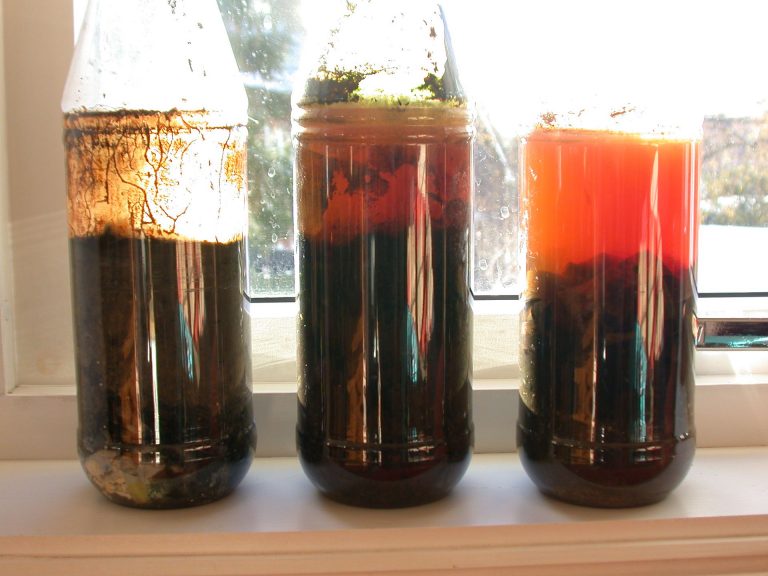
By Hanne S. Finstad, Founder of Scientist Factory and Ph.D.
The first bacteria that originated on Earth lived in areas with little oxygen. Today, we find their descendants in our bowels, rivers, and the sea. They make beautiful colours if you grow these bacteria on your windowsill.
Equipment
- 2 large soda bottles with the labels removed
- Tape
- 1 hardboiled egg
- 1 page of a newspaper in strips
- Mud from a small river or brook. You can also use mud from salt water
Instructions
- Cut off the bottleneck of one of the bottles and tape it to the other like a funnel. This makes it easier to fit things into the bottle
- Place the newspaper stripps and the egg inside the bottle so that the bacteria get cellulose and sulfur, which they like
- Fill with mud to the point where the bottleneck begins and shake gently
- Remove the funnel and attach the cap loosly. It should not be air-tight. Gases need to be able to escape the bottle so that it doesn’t explode
- Place the bottle in daylight and pay attention to what happens over the next weeks and months
What happens?
You have now made something called a Winogradsky column. It is named after the biologist Sergius Winogradsky. He used such bottles to investigate how bacteria affect each other in an ecosystem. An ecosystem is an area where animals and plants affect each other, for example, in a forest. There’s a tiny ecosystem inside the bottle, where all the bacteria and everything you put there affects one another.
The bacteria need various things to live, such as sunlight, oxygen, newspaper, egg yolks, or something entirely different. There is a lot of oxygen in the bottle initially, and the bacteria that like oxygen will thrive by using the oxygen while they eat the paper. Such bacteria tend to make alcohols and acids while they eat, which is excellent fodder for other bacteria. The bacteria which like alcohol and acids also enjoy sulfur. The egg is ripe with sulfur. The bacteria use sulfur to make a gas called hydrogen sulfite. Some of this gas colours the mud black, and the rest is spent by other bacteria in the bottle.
You can’t know exactly what bacteria you grow in your Winogradsky column, nor which gases they create. But the experiment is an excellent illustration of how different animals, plants, and bacteria affect one another. Small changes can have a significant impact.
By Hanne S. Finstad, Founder of Scientist Factory and Ph.D. The first bacteria that originated on Earth lived in areas with little oxygen. Today, we find their descendants in our bowels, rivers, and the sea. They make beautiful colours if you grow these bacteria on your windowsill. Equipment 2 large soda bottles with the labels….Click to read more
